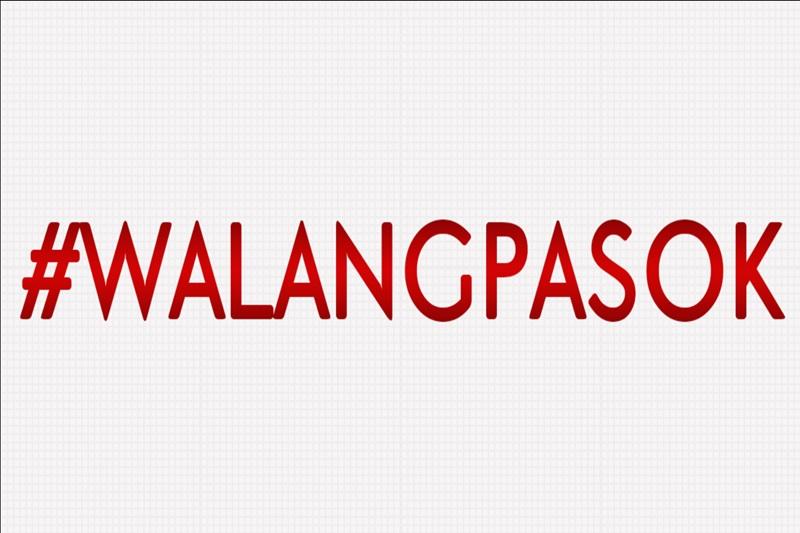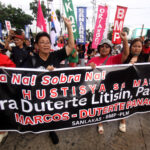Classes in Metro Manila schools are suspended on Monday, October 13, 2025, due to the rise in flu and flu-like illness cases, and some areas in Mindanao also have no classes due to the effects of an earthquake.
- National Capital Region – no face-to-face classes, all Public Schools (Oct. 13 and 14); shift to alternative learning modalities
- Malabon City – no face-to-face classes, all levels, public and private (Oct. 13 and 14); shift to alternative learning modalities
- Marikina City – no classes all levels public and private (Oct. 13 and 14)
- Parañaque City – no face-to-face classes, elementary to high school, public and private (Oct. 13 and 14); shift to alternative learning modalities
- Agusan del Sur province – no classes all levels public and private Davao Oriental province – no face-to-face classes all levels public schools
- Davao Oriental province – no face-to-face classes all levels public schools
- General Santos City – no face-to-face classes, all levels, public and private (Oct. 13 and 14)
- Tandag City, Surigao del Sur – no face-to-face classes, all levels, public and private
Metro Manila
Metro Manila is the bustling capital region of the Philippines, a dense metropolitan area composed of 16 cities. It was officially established in 1975 to administer an efficiently coordinated government for the rapidly growing urban center, which had its historical roots in the Spanish colonial city of Intramuros, founded in 1571. Today, it serves as the country’s primary hub for government, economy, and culture.
National Capital Region
The National Capital Region refers to the official capital territory of India, encompassing New Delhi along with surrounding urban areas and satellite cities. Established under the National Capital Territory Act of 1991, it serves as the political and administrative heart of the country, housing key government institutions like the Parliament and Rashtrapati Bhavan. The region’s modern development was largely shaped by the British colonial era, notably with New Delhi being inaugurated as the capital of British India in 1931.
Malabon City
Malabon City is a coastal city in Metro Manila, Philippines, historically known for its *asinera* (salt beds) and fishing industry. It was officially founded as a town in the 18th century and is renowned for its well-preserved Spanish-era houses and its vibrant “Malabon Food Crawl” featuring local delicacies. The city’s name is derived from the Tagalog words “maraming labong,” meaning “plenty of bamboo shoots.”
Marikina City
Marikina City is a first-class highly urbanized city in Metro Manila, Philippines, historically known as the “Shoe Capital of the Philippines.” Its shoemaking industry flourished in the 1880s under Don Laureano “Kapitan Moy” Guevara, who pioneered the country’s first pair of shoes from his home, which is now a heritage site. Today, the city is also celebrated for its well-planned urban landscape, clean and green environment, and the Marikina River Park system.
Parañaque City
Parañaque City is a first-class, highly urbanized city located in Metro Manila, Philippines, historically known as a major fishing and salt-making center. It played a significant role during the Spanish colonial era as a bastion of faith, earning it the nickname “The Catholic Diocese of the Philippines,” and was a site of resistance during the 1896 Philippine Revolution. Today, it is a vital economic hub, home to the Ninoy Aquino International Airport (NAIA) and numerous commercial and residential developments.
Agusan del Sur province
Agusan del Sur is a province in the Caraga region of Mindanao, Philippines, known for its vast Agusan Marsh, one of the country’s most significant wetlands. Historically, the area was home to indigenous groups like the Manobo, and a major archaeological discovery, the 21-pound Golden Tara of Agusan, points to ancient trade with neighboring empires like Srivijaya. Today, its economy is primarily based on agriculture and forestry.
Davao Oriental province
Davao Oriental is a province in the southeastern part of Mindanao, Philippines, known for its stunning natural landscapes, including the UNESCO-listed Mount Hamiguitan Range Wildlife Sanctuary. Historically, its coastal areas were among the first places in the country to be visited by Spanish explorers in the 16th century. Today, it is a region celebrated for its pristine beaches, powerful Pacific waves, and rich biodiversity.
General Santos City
General Santos City is a major urban center in the southern Philippines, located in the province of South Cotabato on the island of Mindanao. Historically, the area was pioneered and settled in the late 1930s by General Paulino Santos, for whom the city is named, leading a wave of Christian settlers to what was then a largely undeveloped region. It has since grown into a highly urbanized city renowned as the “Tuna Capital of the Philippines” due to its prosperous fishing industry.





